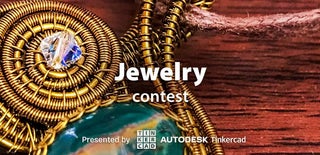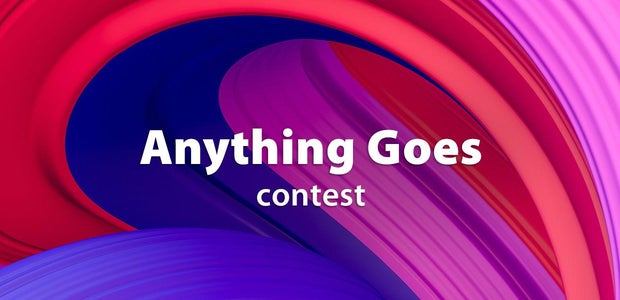Introduction: 3D Printed LED Earring With Tinkercad Codeblocks
I was looking for a simple, free parametric 3D model design tool, when I accidentally ran into Codeblocks, a feature of Tinkercad. Knowing Scratch programming, this tool looked pretty intuitive to me. Turns out, it was relatively easy to get started, even for beginners! Playing around with it, I was inspired by one of the sample programs and decided to remix it to make a pair of earrings.
Supplies
- PLA filament for 3D printer
- Earring hooks
- Elastic string for Jewelry making or fishing wire
- Beads
- Mini battery powered LED Balloon lights with hooks at the bottom. These ones turn on and off by tightening/loosening the base.
Step 1: 3D Design - a Remix
If you have used Codeblocks before, you only need to look at the bolded instructions. If you do not have a TinkerCAD account, create a free account first. Log into your account. You should be able to create “3D Designs”, “Circuits”, and “Codeblocks”. Click on the blue “+Create” button on the top left and select “Codeblocks.” you will see a pop-up window allowing you to choose either create your own new design or take a look at some of the sample designs.
Choose the “Basket” sample program. You will see a new screen brought up. On the left is a list of elements, operations, and settings; in the middle are the blocks of code that you can drag and drop from the left panel; and on the right is the 3D model that you are creating. Click the play button in the top right to see how the program builds the 3D model. You can change the play speed by adjusting the speed scale to the left of the play button.
The code is pretty self-explanatory thanks to the comment rows starting with “//”. I highlighted rows where you can make some changes to the parameters and see interesting results on the final result. At block 1, you set up the density of the basket structure, or how many frames you are planning to make. At block 2, you define each frame's size ("radius"), sharpness ("sides"), thickness, ("tube"), and cross-section shape ("steps). At block 3, you define the tilt angle of the frame. Block 4 shifts the frame, as any object is centered on the workspace by default. So, to make it sit on the surface and in the right position, you would need to raise it up by half the height of the object and move it around. Block 5 adds a bottom to the basket. I kept that, as it made it easier to print out. These parametrized settings make it very easy to try out different designs. It also has the control logic which is used to repeatedly create frames in this case.
For my own design, I played around several settings by changing parameters at 1, 2, 3, 5, and 6. I printed out a few protoypes before I finalized the settings, as shown in the last image. I also added a scale factor after block 4 to give the earring an elongated look. I also chose to set the frame size to 4 to make it look more geometrical.In one of the screenshots, I set the frame size to 40, which will result in a much smoother look.
A key change for the design is the “Wall Thickness” in block 5. The hole created needs to be big enough to let the beads through but not too big to let the LED light to slip through. If you have differently sized beads or LED lights, you may need a different setting than what I used.
Step 2: Print Out 3D Design
As mentioned earlier, I created several designs in TinkerCAD, then sliced them with UltiMaker Cura. Please refer to the file geo_earring_4.stl for the design I have chosen at the end.
Step 3: Assemble
First, secure the string to the earring hook.
Next, arrange the beads and thread a thread through the beads one by one. Secure.
Then, lead the string through the hole on the bottom of the 3D print out structures as shown. If you followed my instructions correctly, the beads should be able to go through this hole.
Last, secure tightly to the hooks at the base of the LED light. Trim the excess strings.
Tip: the LED lights are battery powered. To replace the battery, carefully pull the LED lights, which should pull the beads through the earring. Pull it out just enough so you can twist the LED light. Twist off the lightbulb, replace the battery, then twist the lightbulb back on to the base. Pull the hook gently, as otherwise, the beads won't come out of the 3D printed structure.
Set it up in a box and get ready to give it out as a gift during the holiday season!

Participated in the
Jewelry Contest















2 Comments
4 weeks ago
Nice job on these!
Reply 4 weeks ago
Thank you! This project is surprisingly fun :)